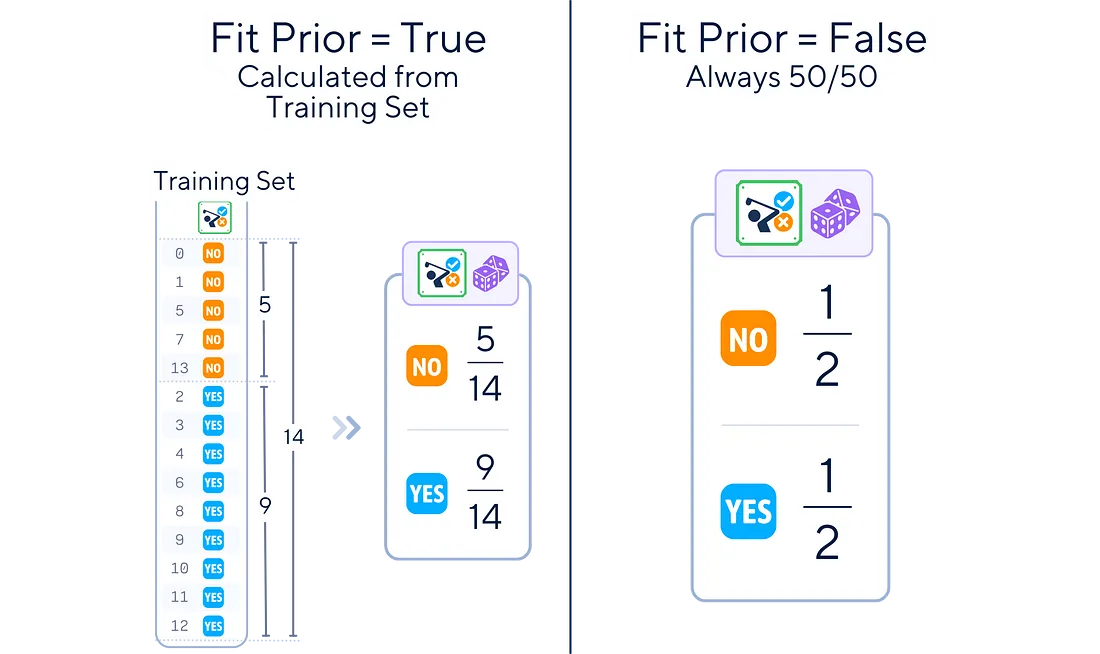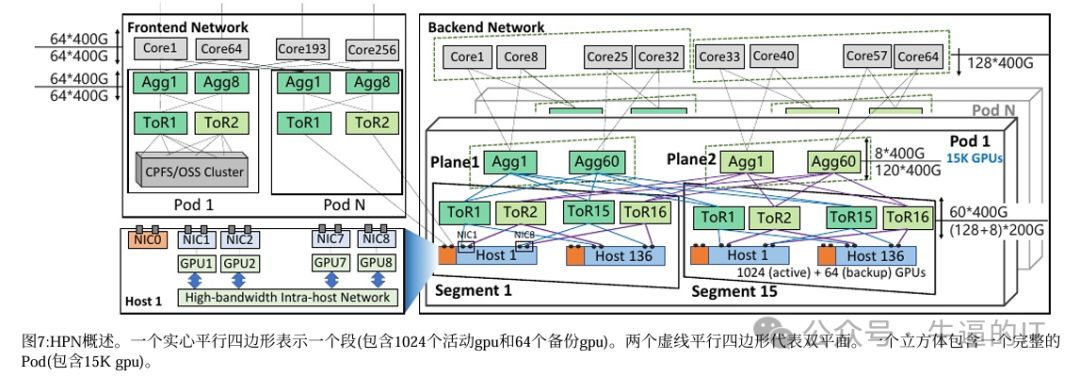1 前言
普元EOS的数据实体生成SDO接口和实现类的代码,可以通过自定义代码生成模板,实现代码自定义。

2 模板存放位置
模板存放位置如下:安装目录/dropins/eostools/com.primeton.studio.entity.ui-x.x.x.x.jar里面,SDO模版都在/templates/sdo下。

找到这个jar文件,用winrar打开,注意:不要解压缩到文件夹,只要打开即可。

打开后,找到模板文件夹。

然后将这个文件夹拖拽到本地硬盘上,编辑其中的模板文件,然后再拖拽回去。
最后关闭winrar。这样就完成了jar文件中的模板文件的编辑。
3 删除实现类中大量的注释
在SDO实现类中有大量的注释,看起来很乱,可以修改模板文件 SdoCode.vm 文件,来删除无用的注释。

3.1 编辑覆盖SdoCode.vm
编辑SdoCode.vm文件,编辑完毕后,拖拽进 winrar 窗口,覆盖jar中对应的文件。
编辑后的SdoCode 内容如下:
#parse("templates/JavaHeader.vm" )
package $javaInfo.getPackageName();
#set($tempImport="")
#foreach($importType in $javaInfo.getImportTypes())
#if( $importType && !$tempImport.contains($importType))
import $importType;
#set($tempImport="$tempImport,$importType")
#else
#end
#end
/**
* A representation of the model object '<em><b>$javaInfo.getJavaName()</b></em>'.
*/
public class $javaInfo.getJavaName() #if(${javaInfo.getExtendClassInterfaceName()})extends ${javaInfo.getExtendClassInterfaceName()} #end#if(${javaInfo.getImplementInterfaceName()})implements ${javaInfo.getImplementInterfaceName()} #end{
/**
* Comment for <code>serialVersionUID</code>
*/
private static final long serialVersionUID = 1L;
#foreach($fieldInfo in $javaInfo.getFieldInfos())
#set ( $index = $velocityCount - 1 )
public final static int INDEX_$fieldInfo.getFieldName().toUpperCase() = $index;
#end
public static final int SDO_PROPERTY_COUNT = $javaInfo.getFieldInfos().size();
public static final int EXTENDED_PROPERTY_COUNT = -1;
##
#parse( "templates/sdo/SdoConstructor.vm" )
protected void validate() {
validateType(TYPE);
}
#parse( "templates/JavaGetSetMethod.vm" )
}注意:拖拽覆盖前,一定要将EOS IDE关闭,否则该jar文件比占用,是无法被覆盖修改的。

3.2 编辑覆盖 JavaGetSetMethod.vm
编辑后的文件内容如下:
## get, set ·½·¨
#foreach($fieldInfo in $javaInfo.getFieldInfos())
public $fieldInfo.getShortTypeName() get${fieldInfo.getCapFieldName()}() {
return $fieldInfo.getGetMethodString();
}
public void set${fieldInfo.getCapFieldName()}($fieldInfo.getShortTypeName() $fieldInfo.getFieldName()) {
$fieldInfo.getSetMethodString();
}
#end3.3 最终效果
原SDO实现类文件如下:
/*******************************************************************************
*
* Copyright (c) 2001-2006 Primeton Technologies, Ltd.
* All rights reserved.
*
* Created on Apr 11, 2008
*******************************************************************************/
package com.primeton.eos.KgptDemo.model.kgptdemo.ProjectDataset.impl;
import com.primeton.eos.KgptDemo.model.kgptdemo.ProjectDataset.TProject;
import com.primeton.ext.data.sdo.DataUtil;
import com.primeton.ext.data.sdo.ExtendedDataObjectImpl;
import commonj.sdo.Type;
import java.util.Date;
/**
* <!-- begin-user-doc2 -->
* A representation of the model object '<em><b>TProjectImpl</b></em>'.
* <!-- end-user-doc2 -->
*
* <p>
* The following features are supported:
* <ul>
* <li>{@link com.primeton.eos.KgptDemo.model.kgptdemo.ProjectDataset.impl.TProjectImpl#getId <em>Id</em> <desc></desc>}</li>
* <li>{@link com.primeton.eos.KgptDemo.model.kgptdemo.ProjectDataset.impl.TProjectImpl#getProjectCode <em>ProjectCode</em> <desc>项目Code</desc>}</li>
* <li>{@link com.primeton.eos.KgptDemo.model.kgptdemo.ProjectDataset.impl.TProjectImpl#getProjectName <em>ProjectName</em> <desc>项目名称</desc>}</li>
* <li>{@link com.primeton.eos.KgptDemo.model.kgptdemo.ProjectDataset.impl.TProjectImpl#getProjectType <em>ProjectType</em> <desc>项目类型</desc>}</li>
* <li>{@link com.primeton.eos.KgptDemo.model.kgptdemo.ProjectDataset.impl.TProjectImpl#getProjectTemplateId <em>ProjectTemplateId</em> <desc>项目模板Id</desc>}</li>
* <li>{@link com.primeton.eos.KgptDemo.model.kgptdemo.ProjectDataset.impl.TProjectImpl#getCreateTime <em>CreateTime</em> <desc>新增时间</desc>}</li>
* <li>{@link com.primeton.eos.KgptDemo.model.kgptdemo.ProjectDataset.impl.TProjectImpl#getCreateUser <em>CreateUser</em> <desc>新增用户</desc>}</li>
* <li>{@link com.primeton.eos.KgptDemo.model.kgptdemo.ProjectDataset.impl.TProjectImpl#getUpdateTime <em>UpdateTime</em> <desc>最后更新时间</desc>}</li>
* <li>{@link com.primeton.eos.KgptDemo.model.kgptdemo.ProjectDataset.impl.TProjectImpl#getUpdateUser <em>UpdateUser</em> <desc>最后更新人</desc>}</li>
* <li>{@link com.primeton.eos.KgptDemo.model.kgptdemo.ProjectDataset.impl.TProjectImpl#getSortNo <em>SortNo</em> <desc>排序号</desc>}</li>
* <li>{@link com.primeton.eos.KgptDemo.model.kgptdemo.ProjectDataset.impl.TProjectImpl#getVersion <em>Version</em> <desc>乐观锁</desc>}</li>
* <li>{@link com.primeton.eos.KgptDemo.model.kgptdemo.ProjectDataset.impl.TProjectImpl#getTenantId <em>TenantId</em> <desc>租户id</desc>}</li>
* </ul>
* </p>
*
* @extends ExtendedDataObjectImpl;
*
* @implements TProject;
*/
public class TProjectImpl extends ExtendedDataObjectImpl implements TProject {
/**
* Comment for <code>serialVersionUID</code>
*/
private static final long serialVersionUID = 1L;
public final static int INDEX_ID = 0;
public final static int INDEX_PROJECTCODE = 1;
public final static int INDEX_PROJECTNAME = 2;
public final static int INDEX_PROJECTTYPE = 3;
public final static int INDEX_PROJECTTEMPLATEID = 4;
public final static int INDEX_CREATETIME = 5;
public final static int INDEX_CREATEUSER = 6;
public final static int INDEX_UPDATETIME = 7;
public final static int INDEX_UPDATEUSER = 8;
public final static int INDEX_SORTNO = 9;
public final static int INDEX_VERSION = 10;
public final static int INDEX_TENANTID = 11;
public static final int SDO_PROPERTY_COUNT = 12;
public static final int EXTENDED_PROPERTY_COUNT = -1;
/**
* <!-- begin-user-doc -->
* <!-- end-user-doc -->
*/
public TProjectImpl() {
this(TYPE);
}
/**
* <!-- begin-user-doc -->
* <!-- end-user-doc -->
*/
public TProjectImpl(Type type) {
super(type);
}
protected void validate() {
validateType(TYPE);
}
/**
* Returns the value of the '<em><b>Id</b></em>' attribute.
* <!-- begin-user-doc -->
* <p>
* If the meaning of the '<em>Id</em>' attribute isn't clear,
* there really should be more of a description here...
* </p>
* <!-- end-user-doc -->
* @return the value of the '<em>Id</em>' attribute.
* @see #setId(java.lang.String)
*/
public String getId() {
return DataUtil.toString(super.getByIndex(INDEX_ID, true));
}
/**
* Sets the value of the '{@link com.primeton.eos.Test#getId <em>Id</em>}' attribute.
* <!-- begin-user-doc -->
* <!-- end-user-doc -->
* @param value the new value of the '<em>Id</em>' attribute.
* @see #getId()
*/
public void setId(String id) {
super.setByIndex(INDEX_ID, id);
}
/**
* Returns the value of the '<em><b>ProjectCode</b></em>' attribute.
* <!-- begin-user-doc -->
* <p>
* If the meaning of the '<em>ProjectCode</em>' attribute isn't clear,
* there really should be more of a description here...
* </p>
* <!-- end-user-doc -->
* @return the value of the '<em>ProjectCode</em>' attribute.
* @see #setProjectCode(java.lang.String)
*/
public String getProjectCode() {
return DataUtil.toString(super.getByIndex(INDEX_PROJECTCODE, true));
}
/**
* Sets the value of the '{@link com.primeton.eos.Test#getProjectCode <em>ProjectCode</em>}' attribute.
* <!-- begin-user-doc -->
* <!-- end-user-doc -->
* @param value the new value of the '<em>ProjectCode</em>' attribute.
* @see #getProjectCode()
*/
public void setProjectCode(String projectCode) {
super.setByIndex(INDEX_PROJECTCODE, projectCode);
}
/**
* Returns the value of the '<em><b>ProjectName</b></em>' attribute.
* <!-- begin-user-doc -->
* <p>
* If the meaning of the '<em>ProjectName</em>' attribute isn't clear,
* there really should be more of a description here...
* </p>
* <!-- end-user-doc -->
* @return the value of the '<em>ProjectName</em>' attribute.
* @see #setProjectName(java.lang.String)
*/
public String getProjectName() {
return DataUtil.toString(super.getByIndex(INDEX_PROJECTNAME, true));
}
/**
* Sets the value of the '{@link com.primeton.eos.Test#getProjectName <em>ProjectName</em>}' attribute.
* <!-- begin-user-doc -->
* <!-- end-user-doc -->
* @param value the new value of the '<em>ProjectName</em>' attribute.
* @see #getProjectName()
*/
public void setProjectName(String projectName) {
super.setByIndex(INDEX_PROJECTNAME, projectName);
}
/**
* Returns the value of the '<em><b>ProjectType</b></em>' attribute.
* <!-- begin-user-doc -->
* <p>
* If the meaning of the '<em>ProjectType</em>' attribute isn't clear,
* there really should be more of a description here...
* </p>
* <!-- end-user-doc -->
* @return the value of the '<em>ProjectType</em>' attribute.
* @see #setProjectType(java.lang.String)
*/
public String getProjectType() {
return DataUtil.toString(super.getByIndex(INDEX_PROJECTTYPE, true));
}
/**
* Sets the value of the '{@link com.primeton.eos.Test#getProjectType <em>ProjectType</em>}' attribute.
* <!-- begin-user-doc -->
* <!-- end-user-doc -->
* @param value the new value of the '<em>ProjectType</em>' attribute.
* @see #getProjectType()
*/
public void setProjectType(String projectType) {
super.setByIndex(INDEX_PROJECTTYPE, projectType);
}
/**
* Returns the value of the '<em><b>ProjectTemplateId</b></em>' attribute.
* <!-- begin-user-doc -->
* <p>
* If the meaning of the '<em>ProjectTemplateId</em>' attribute isn't clear,
* there really should be more of a description here...
* </p>
* <!-- end-user-doc -->
* @return the value of the '<em>ProjectTemplateId</em>' attribute.
* @see #setProjectTemplateId(java.lang.String)
*/
public String getProjectTemplateId() {
return DataUtil.toString(super.getByIndex(INDEX_PROJECTTEMPLATEID, true));
}
/**
* Sets the value of the '{@link com.primeton.eos.Test#getProjectTemplateId <em>ProjectTemplateId</em>}' attribute.
* <!-- begin-user-doc -->
* <!-- end-user-doc -->
* @param value the new value of the '<em>ProjectTemplateId</em>' attribute.
* @see #getProjectTemplateId()
*/
public void setProjectTemplateId(String projectTemplateId) {
super.setByIndex(INDEX_PROJECTTEMPLATEID, projectTemplateId);
}
/**
* Returns the value of the '<em><b>CreateTime</b></em>' attribute.
* <!-- begin-user-doc -->
* <p>
* If the meaning of the '<em>CreateTime</em>' attribute isn't clear,
* there really should be more of a description here...
* </p>
* <!-- end-user-doc -->
* @return the value of the '<em>CreateTime</em>' attribute.
* @see #setCreateTime(java.util.Date)
*/
public Date getCreateTime() {
return DataUtil.toDate(super.getByIndex(INDEX_CREATETIME, true));
}
/**
* Sets the value of the '{@link com.primeton.eos.Test#getCreateTime <em>CreateTime</em>}' attribute.
* <!-- begin-user-doc -->
* <!-- end-user-doc -->
* @param value the new value of the '<em>CreateTime</em>' attribute.
* @see #getCreateTime()
*/
public void setCreateTime(Date createTime) {
super.setByIndex(INDEX_CREATETIME, createTime);
}
/**
* Returns the value of the '<em><b>CreateUser</b></em>' attribute.
* <!-- begin-user-doc -->
* <p>
* If the meaning of the '<em>CreateUser</em>' attribute isn't clear,
* there really should be more of a description here...
* </p>
* <!-- end-user-doc -->
* @return the value of the '<em>CreateUser</em>' attribute.
* @see #setCreateUser(java.lang.String)
*/
public String getCreateUser() {
return DataUtil.toString(super.getByIndex(INDEX_CREATEUSER, true));
}
/**
* Sets the value of the '{@link com.primeton.eos.Test#getCreateUser <em>CreateUser</em>}' attribute.
* <!-- begin-user-doc -->
* <!-- end-user-doc -->
* @param value the new value of the '<em>CreateUser</em>' attribute.
* @see #getCreateUser()
*/
public void setCreateUser(String createUser) {
super.setByIndex(INDEX_CREATEUSER, createUser);
}
/**
* Returns the value of the '<em><b>UpdateTime</b></em>' attribute.
* <!-- begin-user-doc -->
* <p>
* If the meaning of the '<em>UpdateTime</em>' attribute isn't clear,
* there really should be more of a description here...
* </p>
* <!-- end-user-doc -->
* @return the value of the '<em>UpdateTime</em>' attribute.
* @see #setUpdateTime(java.util.Date)
*/
public Date getUpdateTime() {
return DataUtil.toDate(super.getByIndex(INDEX_UPDATETIME, true));
}
/**
* Sets the value of the '{@link com.primeton.eos.Test#getUpdateTime <em>UpdateTime</em>}' attribute.
* <!-- begin-user-doc -->
* <!-- end-user-doc -->
* @param value the new value of the '<em>UpdateTime</em>' attribute.
* @see #getUpdateTime()
*/
public void setUpdateTime(Date updateTime) {
super.setByIndex(INDEX_UPDATETIME, updateTime);
}
/**
* Returns the value of the '<em><b>UpdateUser</b></em>' attribute.
* <!-- begin-user-doc -->
* <p>
* If the meaning of the '<em>UpdateUser</em>' attribute isn't clear,
* there really should be more of a description here...
* </p>
* <!-- end-user-doc -->
* @return the value of the '<em>UpdateUser</em>' attribute.
* @see #setUpdateUser(java.lang.String)
*/
public String getUpdateUser() {
return DataUtil.toString(super.getByIndex(INDEX_UPDATEUSER, true));
}
/**
* Sets the value of the '{@link com.primeton.eos.Test#getUpdateUser <em>UpdateUser</em>}' attribute.
* <!-- begin-user-doc -->
* <!-- end-user-doc -->
* @param value the new value of the '<em>UpdateUser</em>' attribute.
* @see #getUpdateUser()
*/
public void setUpdateUser(String updateUser) {
super.setByIndex(INDEX_UPDATEUSER, updateUser);
}
/**
* Returns the value of the '<em><b>SortNo</b></em>' attribute.
* <!-- begin-user-doc -->
* <p>
* If the meaning of the '<em>SortNo</em>' attribute isn't clear,
* there really should be more of a description here...
* </p>
* <!-- end-user-doc -->
* @return the value of the '<em>SortNo</em>' attribute.
* @see #setSortNo(int)
*/
public int getSortNo() {
return DataUtil.toInt(super.getByIndex(INDEX_SORTNO, true));
}
/**
* Sets the value of the '{@link com.primeton.eos.Test#getSortNo <em>SortNo</em>}' attribute.
* <!-- begin-user-doc -->
* <!-- end-user-doc -->
* @param value the new value of the '<em>SortNo</em>' attribute.
* @see #getSortNo()
*/
public void setSortNo(int sortNo) {
super.setByIndex(INDEX_SORTNO, sortNo);
}
/**
* Returns the value of the '<em><b>Version</b></em>' attribute.
* <!-- begin-user-doc -->
* <p>
* If the meaning of the '<em>Version</em>' attribute isn't clear,
* there really should be more of a description here...
* </p>
* <!-- end-user-doc -->
* @return the value of the '<em>Version</em>' attribute.
* @see #setVersion(int)
*/
public int getVersion() {
return DataUtil.toInt(super.getByIndex(INDEX_VERSION, true));
}
/**
* Sets the value of the '{@link com.primeton.eos.Test#getVersion <em>Version</em>}' attribute.
* <!-- begin-user-doc -->
* <!-- end-user-doc -->
* @param value the new value of the '<em>Version</em>' attribute.
* @see #getVersion()
*/
public void setVersion(int version) {
super.setByIndex(INDEX_VERSION, version);
}
/**
* Returns the value of the '<em><b>TenantId</b></em>' attribute.
* <!-- begin-user-doc -->
* <p>
* If the meaning of the '<em>TenantId</em>' attribute isn't clear,
* there really should be more of a description here...
* </p>
* <!-- end-user-doc -->
* @return the value of the '<em>TenantId</em>' attribute.
* @see #setTenantId(java.lang.String)
*/
public String getTenantId() {
return DataUtil.toString(super.getByIndex(INDEX_TENANTID, true));
}
/**
* Sets the value of the '{@link com.primeton.eos.Test#getTenantId <em>TenantId</em>}' attribute.
* <!-- begin-user-doc -->
* <!-- end-user-doc -->
* @param value the new value of the '<em>TenantId</em>' attribute.
* @see #getTenantId()
*/
public void setTenantId(String tenantId) {
super.setByIndex(INDEX_TENANTID, tenantId);
}
}修改后,实现类文件如下:
/*******************************************************************************
*
* Copyright (c) 2001-2006 Primeton Technologies, Ltd.
* All rights reserved.
*
* Created on Apr 11, 2008
*******************************************************************************/
package com.primeton.eos.KgptDemo.model.kgptdemo.ProjectDataset.impl;
import com.primeton.eos.KgptDemo.model.kgptdemo.ProjectDataset.TProject;
import com.primeton.ext.data.sdo.DataUtil;
import com.primeton.ext.data.sdo.ExtendedDataObjectImpl;
import commonj.sdo.Type;
import java.util.Date;
/**
* A representation of the model object '<em><b>TProjectImpl</b></em>'.
*/
public class TProjectImpl extends ExtendedDataObjectImpl implements TProject {
/**
* Comment for <code>serialVersionUID</code>
*/
private static final long serialVersionUID = 1L;
public final static int INDEX_ID = 0;
public final static int INDEX_PROJECTCODE = 1;
public final static int INDEX_PROJECTNAME = 2;
public final static int INDEX_PROJECTTYPE = 3;
public final static int INDEX_PROJECTTEMPLATEID = 4;
public final static int INDEX_CREATETIME = 5;
public final static int INDEX_CREATEUSER = 6;
public final static int INDEX_UPDATETIME = 7;
public final static int INDEX_UPDATEUSER = 8;
public final static int INDEX_SORTNO = 9;
public final static int INDEX_VERSION = 10;
public final static int INDEX_TENANTID = 11;
public static final int SDO_PROPERTY_COUNT = 12;
public static final int EXTENDED_PROPERTY_COUNT = -1;
/**
* <!-- begin-user-doc -->
* <!-- end-user-doc -->
*/
public TProjectImpl() {
this(TYPE);
}
/**
* <!-- begin-user-doc -->
* <!-- end-user-doc -->
*/
public TProjectImpl(Type type) {
super(type);
}
protected void validate() {
validateType(TYPE);
}
public String getId() {
return DataUtil.toString(super.getByIndex(INDEX_ID, true));
}
public void setId(String id) {
super.setByIndex(INDEX_ID, id);
}
public String getProjectCode() {
return DataUtil.toString(super.getByIndex(INDEX_PROJECTCODE, true));
}
public void setProjectCode(String projectCode) {
super.setByIndex(INDEX_PROJECTCODE, projectCode);
}
public String getProjectName() {
return DataUtil.toString(super.getByIndex(INDEX_PROJECTNAME, true));
}
public void setProjectName(String projectName) {
super.setByIndex(INDEX_PROJECTNAME, projectName);
}
public String getProjectType() {
return DataUtil.toString(super.getByIndex(INDEX_PROJECTTYPE, true));
}
public void setProjectType(String projectType) {
super.setByIndex(INDEX_PROJECTTYPE, projectType);
}
public String getProjectTemplateId() {
return DataUtil.toString(super.getByIndex(INDEX_PROJECTTEMPLATEID, true));
}
public void setProjectTemplateId(String projectTemplateId) {
super.setByIndex(INDEX_PROJECTTEMPLATEID, projectTemplateId);
}
public Date getCreateTime() {
return DataUtil.toDate(super.getByIndex(INDEX_CREATETIME, true));
}
public void setCreateTime(Date createTime) {
super.setByIndex(INDEX_CREATETIME, createTime);
}
public String getCreateUser() {
return DataUtil.toString(super.getByIndex(INDEX_CREATEUSER, true));
}
public void setCreateUser(String createUser) {
super.setByIndex(INDEX_CREATEUSER, createUser);
}
public Date getUpdateTime() {
return DataUtil.toDate(super.getByIndex(INDEX_UPDATETIME, true));
}
public void setUpdateTime(Date updateTime) {
super.setByIndex(INDEX_UPDATETIME, updateTime);
}
public String getUpdateUser() {
return DataUtil.toString(super.getByIndex(INDEX_UPDATEUSER, true));
}
public void setUpdateUser(String updateUser) {
super.setByIndex(INDEX_UPDATEUSER, updateUser);
}
public int getSortNo() {
return DataUtil.toInt(super.getByIndex(INDEX_SORTNO, true));
}
public void setSortNo(int sortNo) {
super.setByIndex(INDEX_SORTNO, sortNo);
}
public int getVersion() {
return DataUtil.toInt(super.getByIndex(INDEX_VERSION, true));
}
public void setVersion(int version) {
super.setByIndex(INDEX_VERSION, version);
}
public String getTenantId() {
return DataUtil.toString(super.getByIndex(INDEX_TENANTID, true));
}
public void setTenantId(String tenantId) {
super.setByIndex(INDEX_TENANTID, tenantId);
}
}可以看到,新代码简洁多了。
4 在SDO接口中增加字段名常量
修改 SdoInterfaceCode.vm 文件,在文件中增加如下代码:
## FieldName Const
#foreach($fieldInfo in $javaInfo.getFieldInfos())
public static final String FIELD_NAME_$fieldInfo.getFieldName().toUpperCase() = "$fieldInfo.getFieldName()";
#end
完整代码效果如下:
#parse("templates/JavaHeader.vm" )
package $javaInfo.getPackageName();
#set($tempImport="")
#foreach($importType in $javaInfo.getImportTypes())
#if( $importType && !$tempImport.contains($importType))
import $importType;
#set($tempImport="$tempImport,$importType")
#else
#end
#end
/**
#if($javaInfo.getExtendClassInterfaceName())
#foreach($extendInterface in $javaInfo.getExtendClassInterfaceName().split("[,]"))
#if( $extendInterface )
* @extends $extendInterface;
#end
#end
*/
public interface $javaInfo.getJavaName() extends ${javaInfo.getExtendClassInterfaceName()} {
#else
*/
public interface $javaInfo.getJavaName() {
#end
public String QNAME = "${javaInfo.getPackageName()}.${javaInfo.getJavaName()}";
public Type TYPE = TypeHelper.INSTANCE.getType("$javaInfo.getPackageName()", "$javaInfo.getJavaName()");
public static final IObjectFactory<$javaInfo.getJavaName()> FACTORY = new IObjectFactory<$javaInfo.getJavaName()>() {
public $javaInfo.getJavaName() create() {
Type type = TYPE;
if(type == null) {
type = TypeHelper.INSTANCE.getType("$javaInfo.getPackageName()", "$javaInfo.getJavaName()");
}
if(type == null) {
throw new IllegalDataObjectTypeException("cannot find entity type: " + QNAME);
}
return ($javaInfo.getJavaName()) DataFactory.INSTANCE.create(type);
}
};
## FieldName Const
#foreach($fieldInfo in $javaInfo.getFieldInfos())
public static final String FIELD_NAME_$fieldInfo.getFieldName().toUpperCase() = "$fieldInfo.getFieldName()";
#end
## get, set
#foreach($fieldInfo in $javaInfo.getFieldInfos())
public $fieldInfo.getShortTypeName() get${fieldInfo.getCapFieldName()}();
public void set${fieldInfo.getCapFieldName()}($fieldInfo.getShortTypeName() $fieldInfo.getFieldName());
#end
}最终我们看到 SDO接口中增加了字段名常量
public static final String FIELD_NAME_ID = "id";
public static final String FIELD_NAME_PROJECTCODE = "projectCode";
public static final String FIELD_NAME_PROJECTNAME = "projectName";
public static final String FIELD_NAME_PROJECTTYPE = "projectType";
public static final String FIELD_NAME_PROJECTTEMPLATEID = "projectTemplateId";
public static final String FIELD_NAME_CREATETIME = "createTime";
public static final String FIELD_NAME_CREATEUSER = "createUser";
public static final String FIELD_NAME_UPDATETIME = "updateTime";
public static final String FIELD_NAME_UPDATEUSER = "updateUser";
public static final String FIELD_NAME_SORTNO = "sortNo";
public static final String FIELD_NAME_VERSION = "version";
public static final String FIELD_NAME_TENANTID = "tenantId";


















